
Now that the snow has arrived, it's time to start planning for snow removal. Find out how much you should put aside for roof snow removal costs in this guide.
Prevent mini avalanches with a built-in snow retention system


Metal roofing is a long-lasting and durable material, but it is also very smooth. This leads to one of the most common roof issues, which is that snow and ice that accumulate on a metal roof during the winter can slide off and onto the ground. This can be very dangerous if it falls onto a person or a pet, and it can cause damage to cars and landscaping if they happen to be below the affected area.
The following information is intended to be a guide to understanding snow guards and their role in preventing snow avalanches from the roof, but it is important to consult a professional before choosing and installing snow guards.
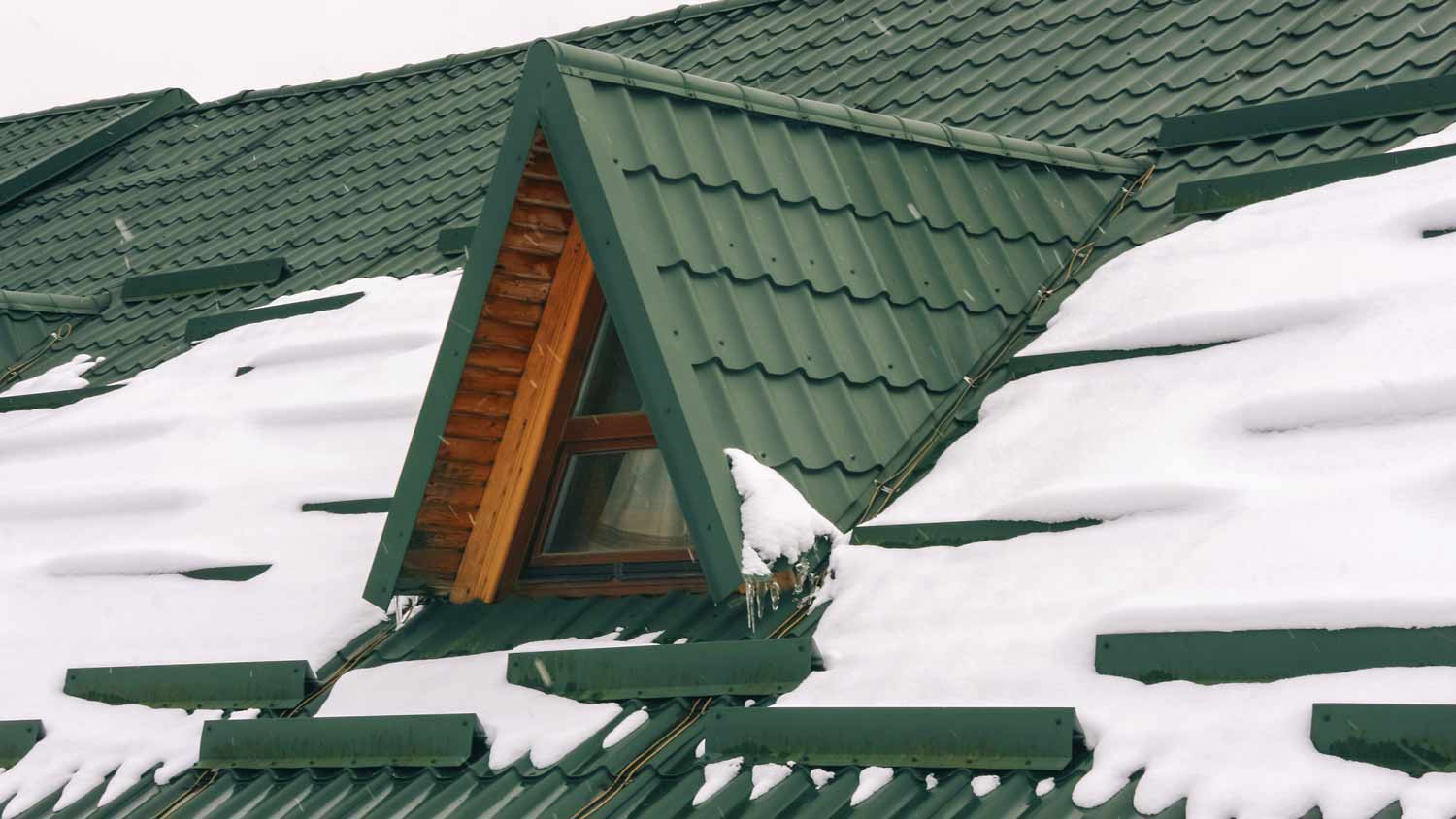
Snow guards, sometimes referred to as snow retention systems or snow fences, are intended to prevent accumulated snow and ice from sliding off a roof. They are particularly helpful on metal roofs that are smooth and do not hold snow well. Once the snow is retained by the guards, it can melt over time, rather than slide off the roof in one big chunk.
While building codes do not often require snow guards on metal roofs, they provide added safety by preventing accumulated snow from falling off the roof and causing injury or property damage to anyone or anything located beneath the roof on the walkway, driveway, or yard.
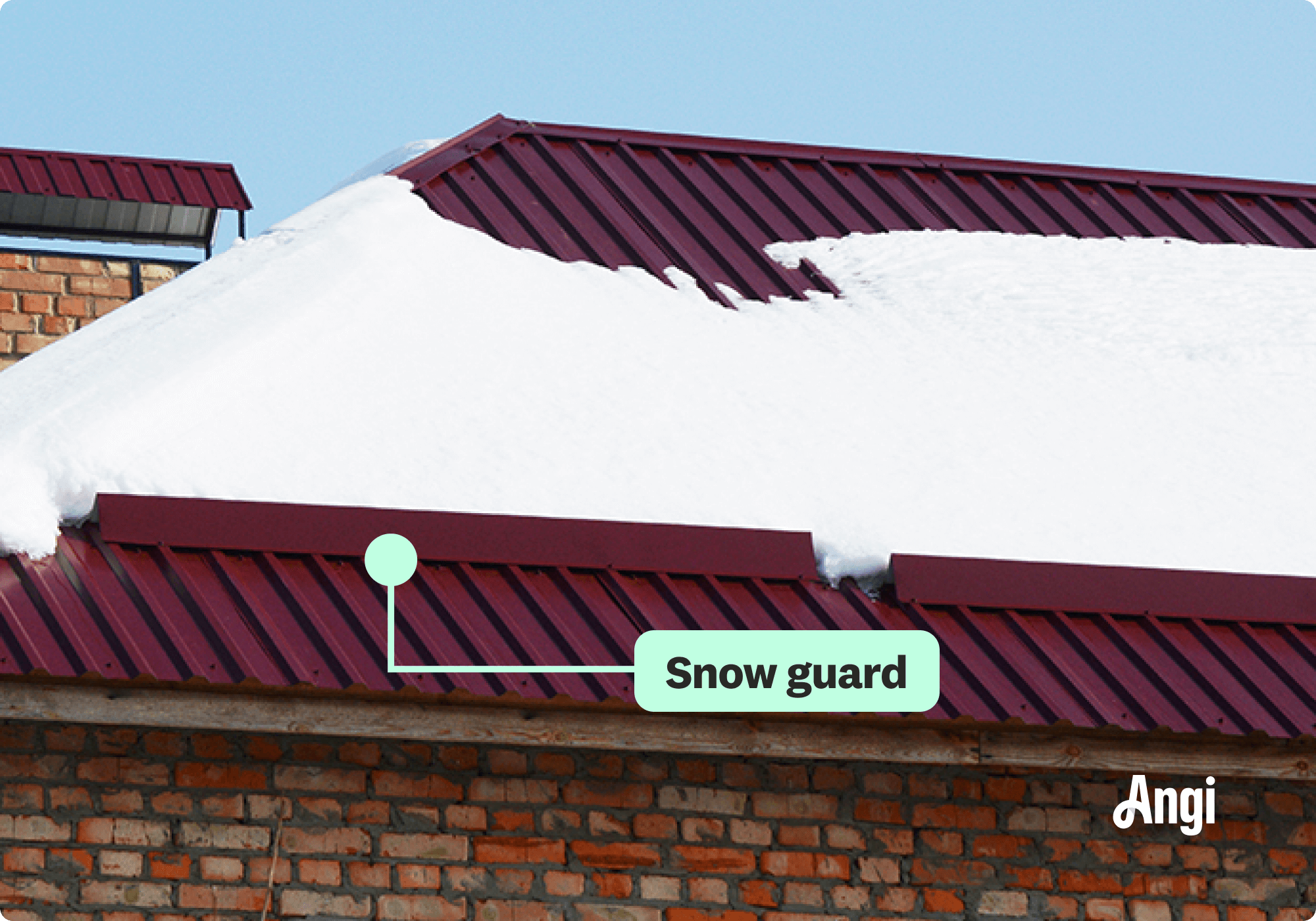
There are two main types of snow guards: continuous and unitized. Which type of guard is right for you depends on your roof, the slope, and the amount of snowfall you are likely to receive, as well as other factors that you should discuss with a roofing contractor near you.
Continuous snow guards use a bar or tube that runs continuously along the length of the roof. There are two types: bar and fence.
Bar snow guards: Often installed horizontally along the roof close to the eaves, these have a minimal modern look, and usually a roof only needs one row to provide sufficient snow retention.
Fence snow guards: Using two or more tubes aligned vertically, these create a fence-like barrier to prevent snow from sliding off the roof. These are stronger and more noticeable than bar snow guards, so they’re best for business or homes in areas that see a high amount of snow.
Unitized snow guards, also referred to as discontinuous snow guards or snow cleats, are individual units that can have a small or large profile and rely on the snow to “bridge” between the devices to stop its migration off the roof.
Small profile snow guards: These are arranged in a pattern on the roof that creates enough friction to keep snow from sliding down the roof. They begin near the eaves and are staggered until they nearly reach the peak of the roof.
Large profile snow guards: Fewer of these are needed to achieve the same result as small profile units. They act more like a snow fence, positioned closer to the eaves.
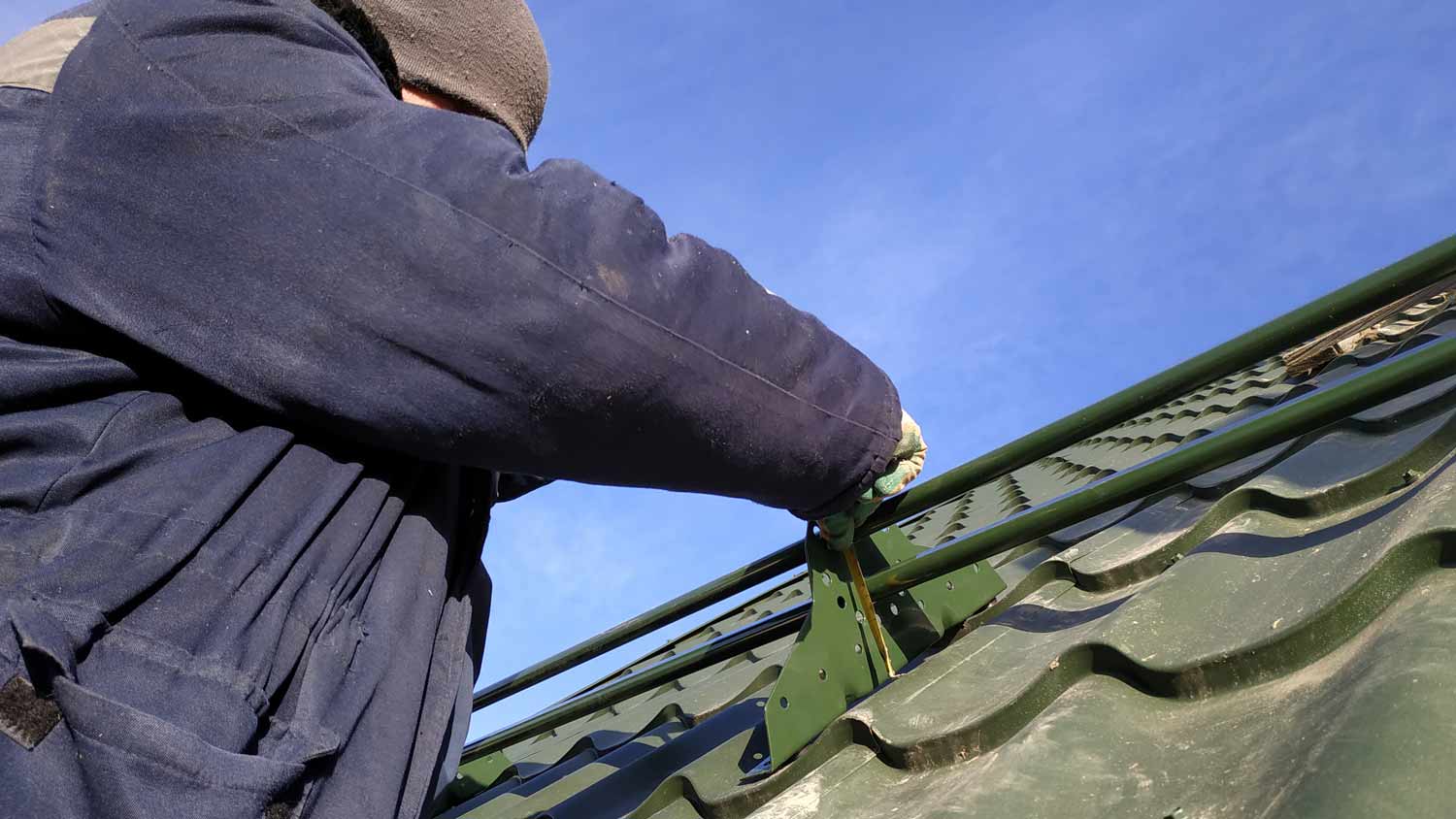
If the area you live in receives significant snowfall throughout the year, installing snow guards on a metal roof is a good way to add safety to your home. They act as a barrier to heavy loads of snow that could otherwise slide off the roof, injuring anyone that happens to be underneath or damaging personal property. Snow slides can also damage gutters and other parts of the roof in their descent, resulting in the hassle, time, and expense of roof repairs.
This guide will help you to better understand how to install snow guards on a metal roof, but before beginning installation, you will need to read the manufacturer’s instructions. These instructions will give specific information about the best screws to use or how to secure the clamps, the best placement for the snow guard, and any other tips that will help with proper installation.
Each type of snow guard has either a clamp or bolt attachment method; some types offer both options. Whatever you choose ultimately depends on what your specific snow guard offers and the type of roof you have. For standing seam roofs, clamp attachments are often recommended because they will clamp onto the ribs and not penetrate the roof.
Often, homeowners will install snow guards around the entire perimeter of their roof to prevent snow from sliding off on all sides. Another option is to place the snow guards strategically above walkways, entryways, and garage doors where people pass by most often. Depending on the type of snow guard you choose, you may need to stagger them and plan the spacing.
If possible, screw-fastened snow guards should be screwed to the roof and into a purlin—the horizontal support that runs between the rafters on the inside of the roof. If there are no purlins in which to screw the snow guards, you can attach two-by-fours to the underside of the roof between the rafters under which the snow guards will be placed.
Using silicone caulk or other adhesive, apply adhesive under the roof guard before attaching the guard to the metal roof. The adhesive will add an additional seal between the metal roof and the snow guard, as well as protect the roof from the guard rubbing against it and damaging the paint. Some snow guards come with a built-in adhesive pad, which is likely unnecessary if additional adhesive is used.
Using screws or the proper set screws for clamp attachments, attach the snow guards to the roof.
Installing snow guards on your metal roof provides added safety for people who may be under the eaves of the roof, as well as protects personal property and the roof system itself, including the gutters. Here are a few tips that can help make installing snow guards a little easier:
Choose a system that offers a color that matches your roof.
Do not rely on adhesive alone because it can fail, resulting in potential paint damage, injury, and property damage.
Make sure to seal any roof penetrations from screws to avoid roof leaks.
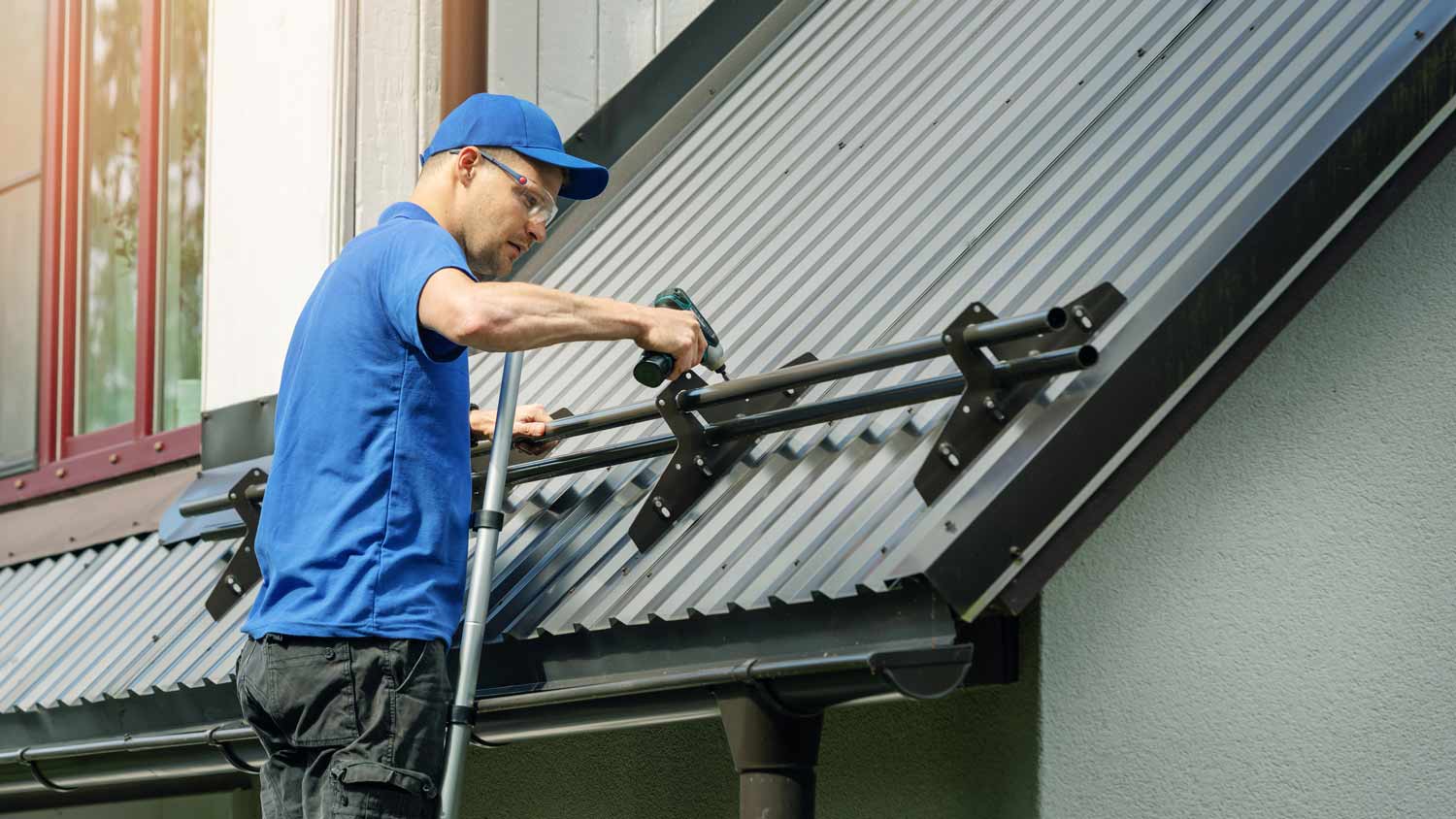
While it may sound like an easy weekend project, choosing the right snow guards and installing them correctly actually requires some mathematical calculations regarding the vertical load and the vector, or “drag,” load of the snow blanket that is likely to accumulate during the winter months.
While it is possible for homeowners to calculate the vector load on their own (multiply the vertical load by the sine of the roof angle), this type of math may be best left to a roofing professional who has experience determining the proper snow guards based on the snow load, vector load, and snow-melt phenomena. The cost to install snow guards is often worth it if you live in an area with heavy snowfall.
If a significant amount of snow has accumulated on your roof and you have not yet installed snow guards, or even if you have and are concerned about a cave-in, you should contact a roofing professional near you to take care of it. While it is possible to walk on a metal roof and remove the snow yourself, it is better to let a qualified professional take care of it. It is well worth the roof snow removal cost to keep you and your home safe.
Another way to prevent snow buildup on your roof is to install roof heating cables. These keep your roof warm throughout the winter, not giving snow a chance to even build up in the first place. The cost to install roof heating cables is often worth it as it saves you the cost of paying for snow guards or snow removal.
The placement of snow guards depends on the individual roof, but typically snow guards are placed between 12 and 18 inches from the eaves, though they can be placed as close as six inches and as far as 24 inches from the eaves. A roofing professional can assess the roof and potential snow loads to determine the best placement.
The answer to this question depends on where you live and the amount of snowfall you receive each year, though snow guards are sometimes recommended in areas that may not see significant snowfall. Snow guards act as a barrier to rooftop snow loads that slide down the roof as they melt. In some cases, large loads can slide off the roof all at once, causing potential harm to anyone or anything that happens to be underneath. Snow guards can prevent this from happening.
Generally, snow guards are not required by building codes unless a local municipality has included them in their code. Even though they are not usually required, snow guards are highly recommended, especially for metal roofs in areas that see significant snowfall throughout the year. They act as a barrier to large loads of snow that can slide off a roof, potentially injuring people and damaging property.
From average costs to expert advice, get all the answers you need to get your job done.

Now that the snow has arrived, it's time to start planning for snow removal. Find out how much you should put aside for roof snow removal costs in this guide.
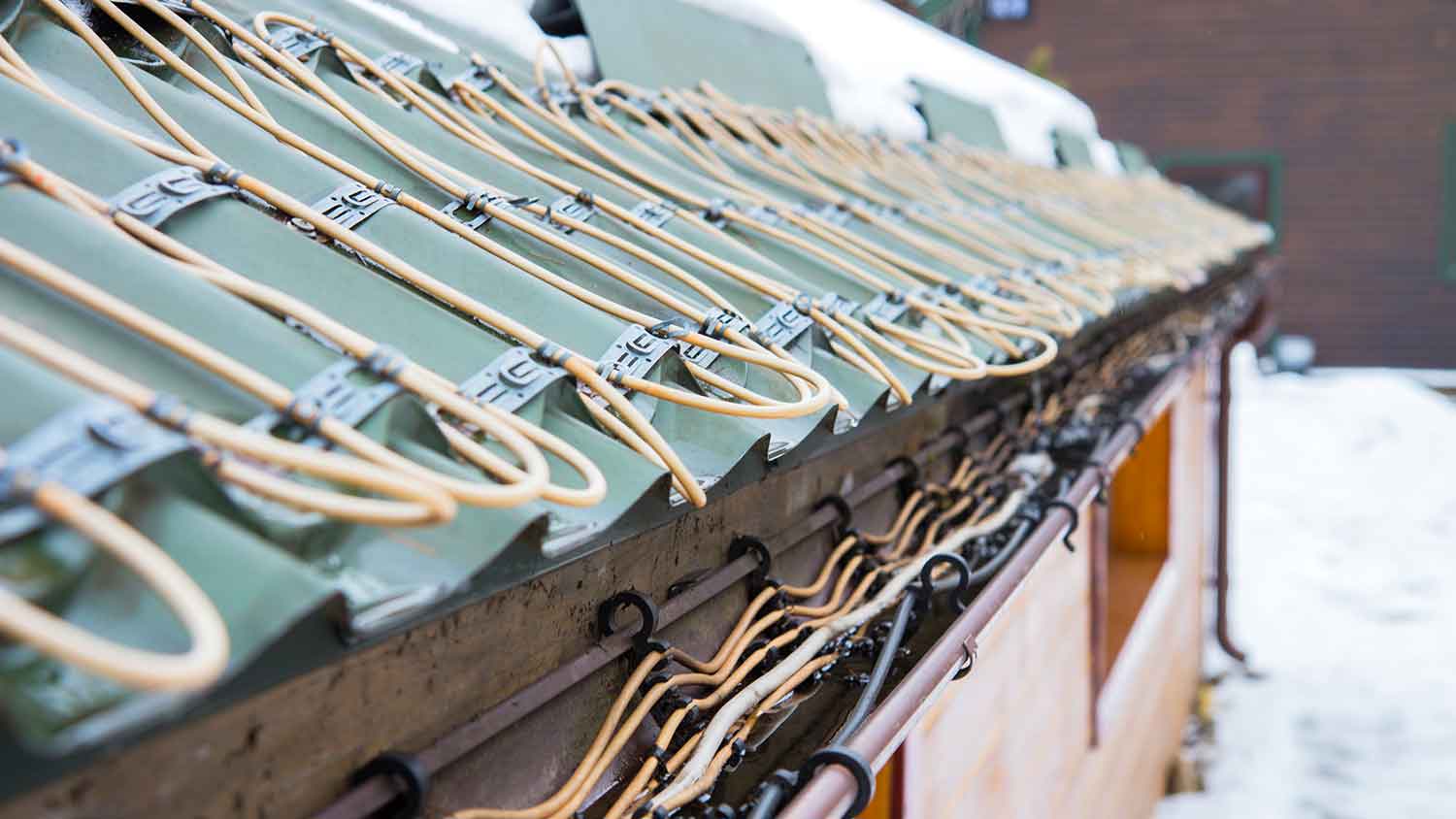
Discover the average roof heating cable installation cost, key price factors, and how to budget for your project. Learn how to save and what to expect.

They’re pretty in the winter sunshine, but are icicles bad for your roof? Learn whether you should worry about ice buildup and icicles hanging from your roof.

Should I remove snow from my roof? This is a common question for homeowners during the colder months. Find out when and how to tackle the job safely this winter.

It’s a common myth that gutters cause ice dams, but any roof with snow on it can form ice dams. Learn how to protect your roof this winter.

Protect your home and roof this winter. Learn when and how to remove snow from your roof with these tips for using snow rakes, de-icer, and a simple rope.